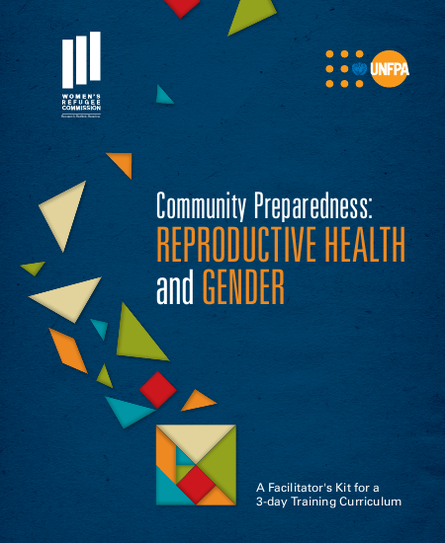
This provisional facilitator's kit includes training preparation, a full 3-day curriculum with information and activities, handouts for participants, PowerPoint presentations, and an appendix of resources. Day 1 focuses on introducing localized risks; Day 2 teaches understanding of reproductive health, including gender-based violence in emergencies; Day 3 takes participants from knowledge to action.
This curriculum is designed to be participatory. It is also meant to be flexible enough to address the needs and interests of training participants in each context. A suggested agenda and set of activities is provided in this kit. However, facilitators and trainers are encouraged to use supplemental tools, materials and resources to craft a context-specific and individualized training to achieve a community’s goals. In the curriculum’s online version, supplemental materials are linked throughout. In the curriculum’s print version, supplemental materials are noted through links within the text, and also in the appendix at the end.
Disaster risk reduction (DRR) activities are ideally focused at the local/community level and address localized risks. Yet such efforts require significant support from leadership at the local, regional and national level. Preparedness activities are more effective when community members and government bodies work together to mitigate the risks and vulnerabilities to an emergency. At the end of this three-day training, community members produce reproductive health and gender action plans that should then be discussed with Barangay officials and representatives of the Local Government Units (LGUs). Communitydriven action plans can inform and complement government-focused activities, such as contingency planning, emergency preparedness and resilience-building initiatives
